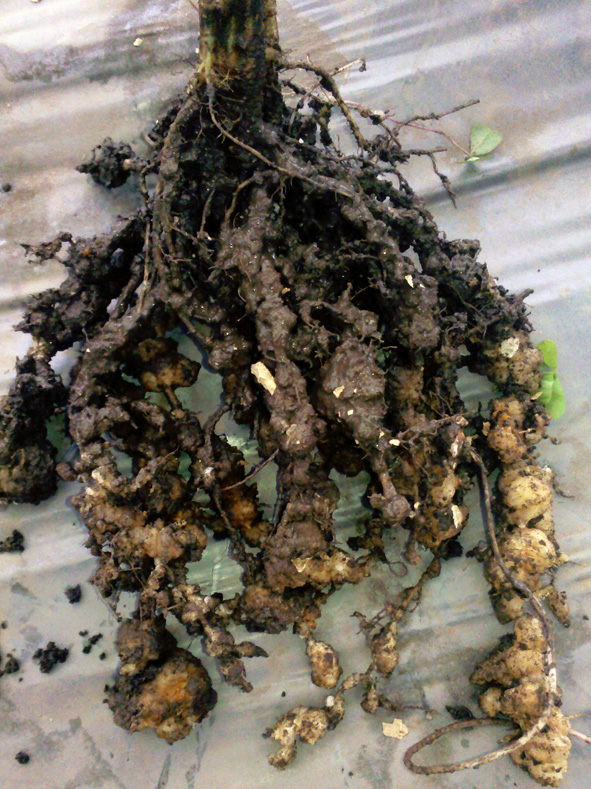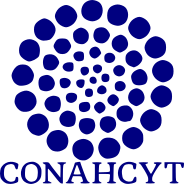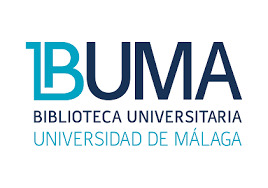Root-knot nematode Meloidogyne spp. in vegetables crops from the Tepeaca Valley, Puebla, Mexico
DOI:
https://doi.org/10.18387/polibotanica.60.17Keywords:
Beta vulgaris, Daucus carota, esterase, malate dehydrogenase, perineal pattern, Meloidogyne spp.Abstract
The objective was to identify Meloidogyne species associated with vegetables from the Tepeaca Valley, Puebla, using the isozyme phenotypes esterase (EST) and malate dehydrogenase (MDH), together with the morphological technique descriptive of the perineal pattern of females. During 2018-2019, soil and roots with vegetable galls were sampled from fields planted with carrots, cilantro, beets and pumpkin. From each of the roots of these cultures, 40 females were obtained from which proteins were extracted by mechanical disintegration, then separated by electrophoresis in polyacrylamide gels. Subsequently, the isoenzymes were revealed to know the relative mobility (Rm); On the other hand, cuts were made with the cuticle of the females to analyze the morphology of the perineal patterns to corroborate the joint identification. The results showed that in the sampled cultures the isoenzymatic phenotypes of EST were found, A1, A2a, A3, VSF-S1, H1, I1, J2a and M2, while for MDH the phenotypes were obtained: N1, N1a, N1e and N2a; associated with the species: M. incógnita, M. arenaria, M. javanica, M. hapla, M. chitwoodi, and M. enterolobii. The phenotypes G1, G1-VF1 for EST and N1d for MDH were also found, which could not be associated with any known species. The perineal patterns showed agreement with the results obtained by the isoenzymatic phenotypes. The discovery of M. javanica, M. chitwoodi and M. enterolobii in the study area is relevant, since they constitute new records, and therefore the necessary measures must be taken to prevent their dispersion.
References
Blok, V. C., & Powers, T. O. (2009). Biochemical Methods. . In R. N. Perry, Moens M., & J. L. Starr (Eds.), Root-Knot nematodes. (pp. 100–103). CABI.
Brito, J. A., Kaur, R., Cetintas, R., Stanley, J. D., Mendes, M. L., Mcavoy, E. J., Powers, T. O., & Dickson, D. W. (2008). Identification and isozyme characterisation of Meloidogyne spp. infecting horticultural and agronomic crops, and weed plants in Florida. Nematology, 10(5), 757–766. www.brill.nl/nemy
Brito, J. A., Kaur, R., Cetintas, R., Stanley, J. D., Mendes, M. L., Powers, T. O., & Dickson, D. W. (2010). MELOIDOGYNE SPP. INFECTING ORNAMENTAL PLANTS IN FLORIDA. In NEMATROPICA (Vol. 40, Issue 1).
Brito, J., Powers, T. O., Mullin, P. G., Inserra, R. N., & Dickson, D. W. (2004). Morphological and Molecular Characterization of Meloidogyne mayaguensis Isolates from Florida 1. Journal of Nematology, 36, 232–240.
Carneiro M. D. G. R., Souza F. B. C., Mattos S. V., & Correia R. V. (2024). Molecular Techniques for Root-Knot Nematode Identification. In Molinari S. (Ed.), Plant-Nematode Interactions (Vol. 1, pp. 227–246). Springer Nature. http://www.springer.com/series/7651
Carneiro, R. , Almeida, R., & Quénéhervé, P. (2000). Enzyme phenotypes of Meloidogyne spp. populations. Nematology, 2, 645–654.
Carneiro, R. , Tigano, M., Randing O., & Almeida R. (2004). Identification and genetic diversity of Meloidogyne spp. on cofee from Brazil, Central America and Hawaii. . Nematology, 6, 287–298.
Carneiro, R. M. O. G., Ritta, M., Almeida’", A., & Carneiro, R. G. (1996). Enzyme phenotypes of Brazilian populations of Meloidogyne spp. In Fundam. appl. NemaLOl (Vol. 19, Issue 6).
Carrillo-Fasio, J. A., Angúlo-Castro, A., Ángel Martínez-Gallardo, J., Ayala-Tafoya, F., Gilberto Yáñez-Juárez, M., Jesús, &, & Retes-Manjarrez, E. (2020). Distribution and incidence of root-knot nematodes (Meloidogyne spp.) on pepper in Sinaloa, Mexico. Tropical Plant Pathology, 46, 195–200. https://doi.org/10.1007/s40858-020-00400-6/Published
Carta, L. K., Handoo, Z. A., Powers, T. O., Miller, S. A., Pérez-Zubiri, R., & Ramírez-Suárez, A. (2005). Sistema de Información Científica Guidelines for Isolation and Identification of Regulated Nematodes of Potato (Solanum tuberosum L.) in North America. In Revista Mexicana de Fitopatología (Vol. 23, Issue 2). http://www.redalyc.org/articulo.oa?id=61223216
Cid del Prado Vera I., Tovar Soto A., & Hernández Alfonsina, J. (2001). Distribución de especies y razas de Meloidogyne en México. Revista Mexicana de Fitopatología, 19(1), 32–39. http://www.redalyc.org/articulo.oa?id=61219105
Cid del Prado-Vera I., Franco-Navarro F., & Godínez-Vidal D. (2018). Plant Parasitic Nematodes and Managements Strategies of Major Crops in Mexico. In Plant Parasitic Nematodes in Sustainable Agriculture of North America (1st ed., Vol. 1, pp. 31–68). Springer.
Cofcewicz, E. T., Carneiro, R. M. D. G., Randig, O., Chabrier, C., & Quénéhervé, P. (2005). Diversity of Meloidogyne spp. on Musa in Martinique, Guadeloupe, and French Guiana. Journal of Nematology, 37(3), 313–322.
Cristóbal-Alejo J, Cetz-Chi JI, Tún-Suárez J Ma, Moo-Koh FA, Peraza-Luna FA, & Candelero-De la Cruz J. (2018). Fungal filtrate of Trichoderma with nematicidal activity against Meloidogyne incognita (Kofoid & White) Chitwood. . Revista de Protección Vegetal , 33(3), 2224–4697.
Da Cunha, J. , D´Arc, R., & Gomes. R. (2003). Variabilidade isoenzimatica de populacoes de Meloidogyne spp. Provenientes de regioes brasileiras productoras de soja. Nematologia Brasileira , 27, 1–12.
De la Jara-Alcocer, F., Zeron-Bravo, F., Torres-Coronel, R., & Tovar-Soto, A. (1994). Manual de Prácticas de Nematología Agrícola. . Escuela Nacional de Ciencias Biológicas-IPN.
Desaeger J. (2022). A Root-knot Nematode Paradise made in Plastic: The Case of Florida Vegetables. In Sikora R A., Desaeger J, & Molendijk L P G (Eds.), Integrated Nematode Management. State-of-theArt and Visions for the Future. (Vol. 1, pp. 247–254). CABI.
Esbenshade, P. R., & Triantaphyllou, A. C. (1985). Use of Enzyme Phenotypes for Identification of Meloidogyne Species 1. In Journal of Nematology (Vol. 17, Issue 1).
Ferris, H., Carlson, H. L., Viglierchio, D. R., Westerdahl, B. B., Wu, F. W., Anderson, C. E., Juurma, A., & Kirby, A. D. W. (1993). Host Status of Selected Crops to Meloidogyne chitwoodi. In Supplement to Journal of Nematology (Vol. 25, Issue 4S).
García, L. E., & Sánchez-Puerta, R. V. (2012). Characterization of a root-knot nematode population of Meloidogyne arenaria from Tupungato (Mendoza, Argentina). . Journal of Nematology , 44, 291–301.
Hunt D I., & Handoo Z. (2012). Root-knot Nematodes. In Practical Plant Nematology (1st ed., Vol. 1, pp. 359–409). Colegio de Postgraduados-Universidad Autónoma de Chapingo-Mundi Prensa.
Hunt, D. J., & Handoo Z. A. (2009). Taxonomy, identification and principal species. In Perry N. R., Moens M., & Starr L. J. (Eds.), Root-Knot nematodes (pp. 55–97). CABI.
Karssen, G. (2002). The plant-parasitic nematode genus Meloidogyne Göldi, 1892 (Tylenchida) in Europe. (G. Karssen, Ed.). Brill.
Karssen, G. , Wesemael, W., & Moens, M. (2013). Root-knot Nematodes. In N. R. Perry & M. Moens (Eds.), Plant Nematology (Segunda, pp. 73–108).
Machado, A. C. Z., Lemes, C. F. C., Silva, S. A., Shigueoka, L. H., Dorigo, O. F., Deuner, C. C., & Ribeiro, N. R. (2022). Variant Meloidogyne javanica populations from Brazil could impact the breeding programs and the management in soybean fields. Tropical Plant Pathology, 47(3), 442–449. https://doi.org/10.1007/s40858-022-00492-2
Medina-Canales, M. G., Rodríguez-Tovar, A. V., Manzanilla-López, R. H., Zúñiga, G., & Tovar-Soto, A. (2014). Identification and molecular characterisation of new Mexican isolates of Pochonia chlamydosporia for the management of Meloidogyne spp. Biocontrol Science and Technology, 24(1), 1–21. https://doi.org/10.1080/09583157.2013.838623
Medina-Canales Ma. G., Carvajal-Sandoval A., Alejandre-Aguilar R., & Tovar-Soto A. (2011). ALTERACIONES HISTOLÓGICAS INDUCIDAS POR MELOIDOGYNE HAPLA Y M. ARENARIA EN ZANAHORIA (DAUCUS CAROTA L.) EN EL VALLE DE TEPEACA, PUEBLA, MÉXICO. Nempatropica, 41, 223–228.
Moens, M. , Perry, R. N., & Starr, J. L. (2009). Meloidogyne species a diverse group of novel and important plant parasites. In . R.N. Perry, M. Moens, & J. L. Starr (Eds.), Root-Knot nematodes. (pp. 1–17). CABI.
Molinari, S. (2001). Polymorphism of esterase isozyme zymograms of Meloidogyne populations detected by phastsystem. Nematologia Mediterranea , 29, 63–66.
Molinari, S., Lamberti, F., Crozzoli, R., Sharma S. B., & Sanchéz Portales L. (2005). Isozyme patterns of exotic Meloidogyne spp. populations. Nematologia Mediterranea , 33, 61–65.
Montes Belmont Roberto. (2000). Nematología Vegetal en México. Investigación documental. (Sociedad Mexicana de Fitopatología, Ed.). Sociedad Mexicana de Fitopatologia.
Perichi, G., & Crozzoli, R. (2010). Morfología, morfometría y hospedantes diferenciales de poblaciones de Meloidogyne de los estados Aragua y Zulia, Venezuela. . Fitopatología Venezolana, 23, 5–15.
Perichi, G., Crozzoli, R., & Alcano, M. (2006). Primer reporte de Meloidogyne graminis (Nematoda: Tylenchida) en Venezuela. Fitopatología Venezolana , 19, 17–18.
Powers T O., & Ramírez-Suárez A. (2012). Molecular Diagnostics of Nematodes: some Practical Considerations. In Manzanilla-López R. H. & Marbán-Mendoza N. (Eds.), Practical Plant Nematology (1st ed., Vol. 1, pp. 131–145). Editorial Colegio de Postgraduados-Universidad Autónoma de Chapingo-Mundi Prensa.
Quénéhervé, P., Godefroid, M., Mège, P., & Marie-Luce, S. (2011). DIVERSITY OF MELOIDOGYNE SPP. PARASITIZING PLANTS IN MARTINIQUE ISLAND, FRENCH WEST INDIES. Nematropica, 41, 191–199.
Ramírez-Suárez, A., Rosas-Hernández, L., Alcasio-Rangel, S., & Powers, T. O. (2014). First report of the root-knot nematode Meloidogyne enterolobii parasitizing watermelon from Veracruz, Mexico. Plant Disease , 98, 428.
Rodríguez, M. , L., Gómez, L., & Peteira, B. (2007). Meloidogyne mayaguensis, plaga emergente para la agricultura tropical y subtropical. Revista Protección Vegetal , 22, 183–198.
Rosas-Hernandez, L. , Patiño-Espejel, M. G. , & Rodriguez-Mendoza, J. (2024). Detección del Nematodos Agallador Meloidogyne enterolobii en Tuberculos de papa de Ahome, Sinaloa, México. Revista Mexicana de Fitopatología , S123.
Santos, D., Abrantes, I., & Maleita, C. (2019). The quarantine root-knot nematode Meloidogyne enterolobii – a potential threat to Portugal and Europe. Plant Pathology, 68(9), 1607–1615. https://doi.org/10.1111/ppa.13079
Shurtleff M. C., & Averre III Ch W. (200 C.E.). Diagnosing Plant Diseases Caused by Nematodes (1st ed., Vol. 1). APS Press.
SIAP. (2020). Servicio de información agroalimentaria y pesquera . Servicio de Información Agroalimentaria y Pesquera .
Sikora R A, Desaeger J., & Molendijk L. (2022). Integrated Nematodes Management: State-of-the-art and Visions for the Future (1st ed., Vol. 1). CABI.
Souza, F. de B. C., Rafael, G., Belot, J. L., Negri, B. F., Perina, F. J., Cares, J. E., & Carneiro, D. G. R. M. (2022). Occurrence of a new race of Meloidogyne enterolobii and avirulent M. incognita populations parasitizing cotton in western Bahia state, Brazil. Physiological and Molecular Plant Pathology, 121. https://doi.org/10.1016/j.pmpp.2022.101874
Souza, R. (2008). Taxonomic of cofee-parasitic Root-Knot Nematodes Meloidogyne spp. . In R. Carneiro & Cofcewicz E.T. (Eds.), Plant-Parasitic Nematodes of coffee. (pp. 87–122). Springer.
Taylor, A. L., & Sasser, J. N. (1983). Biología, identificación y control de los nematodos del nódulo de la raíz. . Departamento de Fitopatología de la universidad de Carolina del norte y agencia de Estados Unidos para el desarrollo internacional.
Trudgill, D. L., Bala, G., Blok V. C., Daudi, A., Davies, K. G., Gowen, S. R., Fargette, M., Madulu, J. D., Mateille, T., Mwageni, W., Netscher, C., Phillips, M. S., Sawadogo, A., trivino C. G., & Voyoukalou, E. (2000). The importance of tropical root-knot nematodes (Meloidogyne spp.) and factors affecting the utility of Pasteuria penetrans as a biocontrol agent. Nematology, 2, 823–845.
Van Der Beek, J. G., & Karssen, G. (1997). Interspecific Hybridization of Meiotic Parthenogenetic Meloidogyne chitwoodi and M. fallax (Vol. 87, Issue 10).
Wang, Y. F., Xiao S., Huang, Y. K., Zhou, X., Zhang, S. S., & Liu, G. K. (2004). First Report of Meloidogyne enterolobii on Carrot in China. Plant Disease , 98, 1019.
Xu, J., Liu P., Meng, Q., & Long, H. (2004). Characterisation of Meloidogyne species from China using isozyme phenotypes, and amplified mitochondrial DNA restriction fragment length polymorphism. European Journal of Plant Pathology , 110, 309–315.
Yang, B., & Eisenback, J. D. (1983). Meloidogyne enterolobii n. sp. (Meloidogynidae), a Root-knot Nematode Parasitizing Pacara Earpod Tree in China. Jornal of Nematology, 15, 381–391.

Downloads
Published
License
Copyright (c) 2025 POLIBOTANICA

This work is licensed under a Creative Commons Attribution-NonCommercial-ShareAlike 4.0 International License.

Polibotánica by Departamento de Botánica de la Escuela Nacional de Ciencias Biológicas del Instituto Politécnico Nacional se distribuye bajo una Licencia Creative Commons Atribución-NoComercial-CompartirIgual 4.0 Internacional.



















